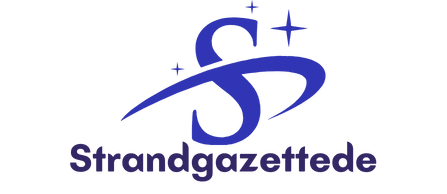What Innovations in NLP Models Are Revolutionizing Customer Service Chatbots?

The landscape of customer service is undergoing a dramatic transformation. One of the driving forces behind this shift is the rise of chatbots powered by advancements in Natural Language Processing (NLP). As businesses strive to improve customer experience and streamline support, these intelligent machines are becoming increasingly integral. So, what makes them tick, and how are innovations in NLP powering their revolution?
The Rise of Chatbots in Customer Service
Chatbots, those delightful digital assistants you’ve probably interacted with online, are becoming a staple in customer service. Businesses are using these AI-driven machines to provide 24/7 support, respond to queries instantly, and create a personalized experience for their customers.
Lire également : How Are Reinforcement Learning Models Being Applied in Autonomous Vehicle Training?
However, the evolution of chatbots hasn’t been smooth sailing. In the early days, chatbots could only handle simple, predefined responses. But thanks to advancements in NLP, they are now capable of understanding and responding to complex language queries in a much more human-like manner.
Understanding Natural Language Processing (NLP)
So, what exactly is NLP? Simply put, NLP is a subfield of AI that enables machines to understand, interpret, and generate human language. It’s the technology that powers voice assistants like Siri and Alexa, enables Google to understand your search queries, and of course, drives chatbot interactions.
Dans le meme genre : Can Deep Learning Models Improve Early Detection of Diseases in Medical Imaging?
NLP models go through a process called machine learning, where they are trained using vast amounts of data to understand language patterns, context, and semantics. Over time, these models become more proficient at understanding and generating human language, allowing them to provide more accurate and human-like responses.
The Role of NLP in Enhancing Chatbot Interactions
The role of NLP in enhancing chatbot interactions cannot be overstated. It’s the technology that enables chatbots to understand the nuances of human language, respond accurately, and learn from each interaction.
For instance, a chatbot powered by advanced NLP can understand a request like "I want to change my shipping address" made in various ways such as "Need to update my delivery location" or "Can I alter the destination for my package?" This ability to understand language variations greatly improves the chatbot’s efficiency and the customer’s experience.
Furthermore, NLP enables chatbots to understand context. For example, if a customer asks, "Can I return this?" followed by "How long will it take?" The chatbot, powered by NLP, will understand that the second question is related to the return process.
Innovations in NLP Models Revolutionizing Customer Service Chatbots
Constant innovation in NLP models is pushing the boundaries of what chatbots can achieve. New models are being developed that can understand not just the literal meaning of words, but also the implicit meaning, tone, and sentiment behind them.
For instance, Transformer-based models like BERT, GPT-3, and XLNet are significantly improving the language understanding capabilities of chatbots. They can understand and generate language with a coherence and fluidity that closely mirrors human conversation.
Another major innovation is the incorporation of transfer learning in NLP models. With transfer learning, a model trained on one task can apply its knowledge to a similar task. This significantly reduces the amount of training data needed and speeds up the learning process.
Moreover, advancements in multimodal NLP are enabling chatbots to understand and generate not just text, but also other forms of data like images and sound. This opens up new possibilities for chatbot interactions, like interpreting a customer’s facial expression or tone of voice to gauge their sentiment.
While chatbots have come a long way, the journey of their evolution is far from over. With continuous advancements in NLP, the day isn’t far when chatbots will not just understand and respond to our queries, but also empathize with us and provide truly personalized support.
The Impact of NLP-driven Chatbots on Businesses and Customers
The impact of NLP-driven chatbots on businesses and customers is profound. For businesses, chatbots offer a cost-effective way to provide round-the-clock customer support. They can handle multiple queries simultaneously, freeing up human agents to handle more complex issues. Moreover, by providing instant responses and personalized support, chatbots significantly enhance customer experience.
For customers, chatbots provide a quick and convenient way to get the help they need. Whether it’s finding information, resolving issues, or making transactions, chatbots can assist customers in real-time, reducing wait times and improving satisfaction.
But the benefits of NLP-driven chatbots extend beyond customer service. They provide businesses with a wealth of data about customer preferences, behaviors, and sentiments. This data can be used to gain insights, make informed decisions, and continually improve the customer experience.
In the coming years, as NLP technology continues to evolve and businesses harness its full potential, chatbots will become not just a tool for customer service, but a key driver of business growth and customer satisfaction.
The Influence of Generative Chatbots on Customer Interactions
Understanding the customer’s needs and providing appropriate responses is a critical factor in enhancing customer satisfaction. Here’s where generative chatbots come to play. These chatbots don’t rely on predefined responses. Instead, they make use of machine learning and natural language processing (NLP) to generate responses in real-time.
These chatbots have the potential to redefine the landscape of customer service. They understand the customer’s language, decipher the context, and generate responses that suit the situation. This is a significant leap from the earlier rule-based chatbots that had a limited set of responses.
Generative chatbots can handle a wider range of customer inquiries, making them invaluable in customer support scenarios. For instance, they can identify a first-time visitor to the website, guide them through the products or services, and even help them make a purchase. All these interactions happen in a conversational manner, improving customer engagement and creating a positive customer experience.
An essential feature of generative chatbots is their ability to perform sentiment analysis. By analyzing the customer’s language and tone, these chatbots can gauge the underlying sentiment, be it positive, negative, or neutral. This information is particularly useful in understanding customer feedback and tailoring responses accordingly.
Emerging Trends and Conclusion: The Future of NLP in Customer Service Chatbots
The future of customer service chatbots is exciting and promising. As NLP continues to evolve, we can expect the emergence of more advanced and sophisticated chatbots capable of understanding and responding to human language with greater precision.
One such emerging trend is the use of virtual assistants in customer service. These AI-powered assistants can handle a wide range of tasks, from scheduling appointments to answering customer queries. They can understand natural language, making them user-friendly and easy to interact with.
Another trend to look out for is the integration of chatbots into various communication channels. Today, chatbots are not just confined to a company’s website or app. They are being integrated into social media platforms, messaging apps, and even email services, making it easier for customers to connect with businesses.
In a nutshell, the advancements in NLP are revolutionizing the way businesses interact with their customers. Chatbots powered by NLP are not just improving customer service; they are transforming it. They are making customer interactions more efficient, personalized, and engaging.
As businesses continue to embrace this technology, customers can look forward to a more seamless and satisfying customer service experience. At the same time, businesses can leverage the power of NLP to gain valuable insights, optimize their operations, and drive growth. The future of customer service is indeed bright, and NLP is leading the way.
